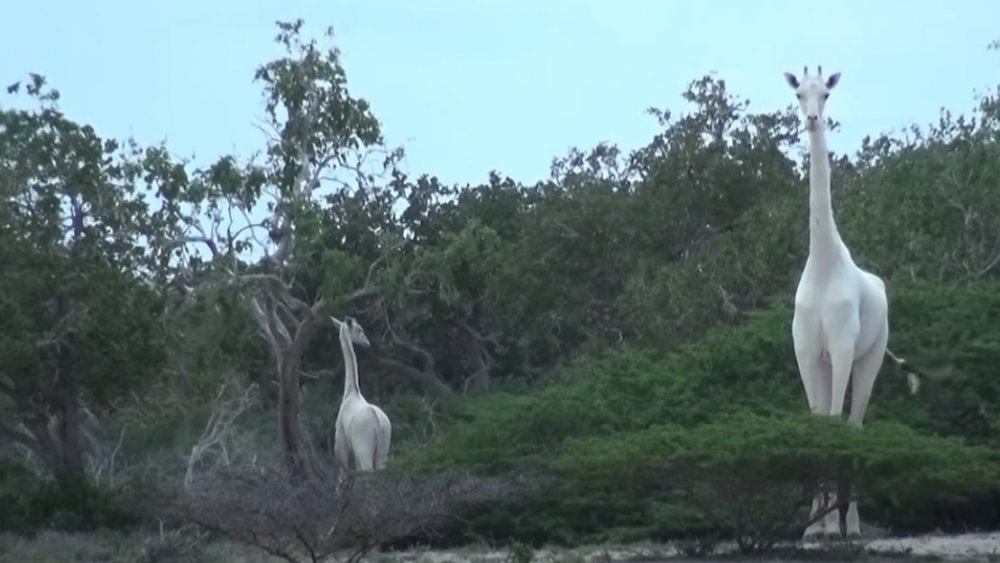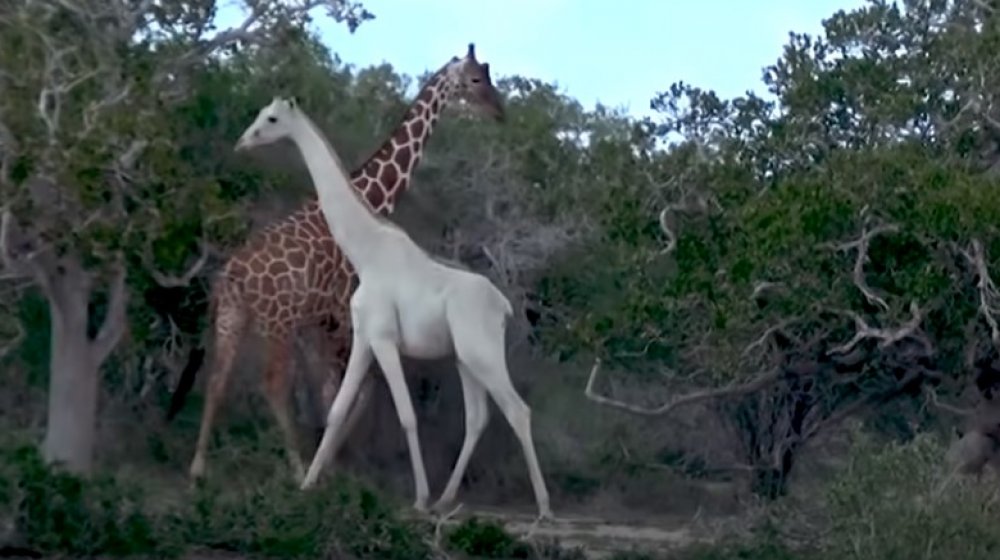The Truth About Rare White Giraffes
Across the wilds of Africa, it is estimated that some 15,000 reticulated giraffes remain, galloping majestically across the Serengeti and expecting none of us to notice that they're just guys in factory reject horse costumes with stilts taped to their arms.
These creatures are rare, their numbers having declined by more than 50% in the last 30 years, according to the Giraffe Conservation Foundation. Rarer still are the varieties possessing unusual features, thanks to genetic weirdness. Giraffes are no strangers to mutation: their elongated cervical vertebrae and remarkable circulatory systems are, according to the Guardian, the results of slowly modified preexisting gene structures. However, their already striking physical features become all the more eye catching when you toss in a curve-ball like a melanin irregularity.
Melanin, a range of dark pigments found naturally in the hair and skin of living beings, can get a little nuts sometimes. If a creature has abnormally high levels of it, they'll tend to come out darker than usual and be classified as either "melanistic" or "totally metal," like those crazy expensive chickens. If they have less melanin than standard issue members of their species, a couple of cool things can happen.
All white answers
The first potential outcome is albinism, a condition that everyone is probably familiar with. An albino creature possesses little to no melanin. As a result, they often come out white, and their eye color may appear red thanks to the lack of pigment masking the blood vessels behind their irises.
In extremely rare cases, a separate but similar abnormality called leucism can occur. Leucistic animals have varying levels of hypopigmentation, but can retain the pigment in their soft tissues. In giraffes, this can lead to a stunning combination of white skin and fur with dark eyes and tail hair. Leucistic giraffes popped up in the news in early 2020, when park officials at Kenya's Garissa County conservancy announced that poachers had shot and killed two of the only remaining examples on Earth, a mother and her seven-month-old calf. As reported by LiveScience, there may be only one leucistic giraffe left on the planet, a male living in Tanzania, which was last spotted in 2016.

